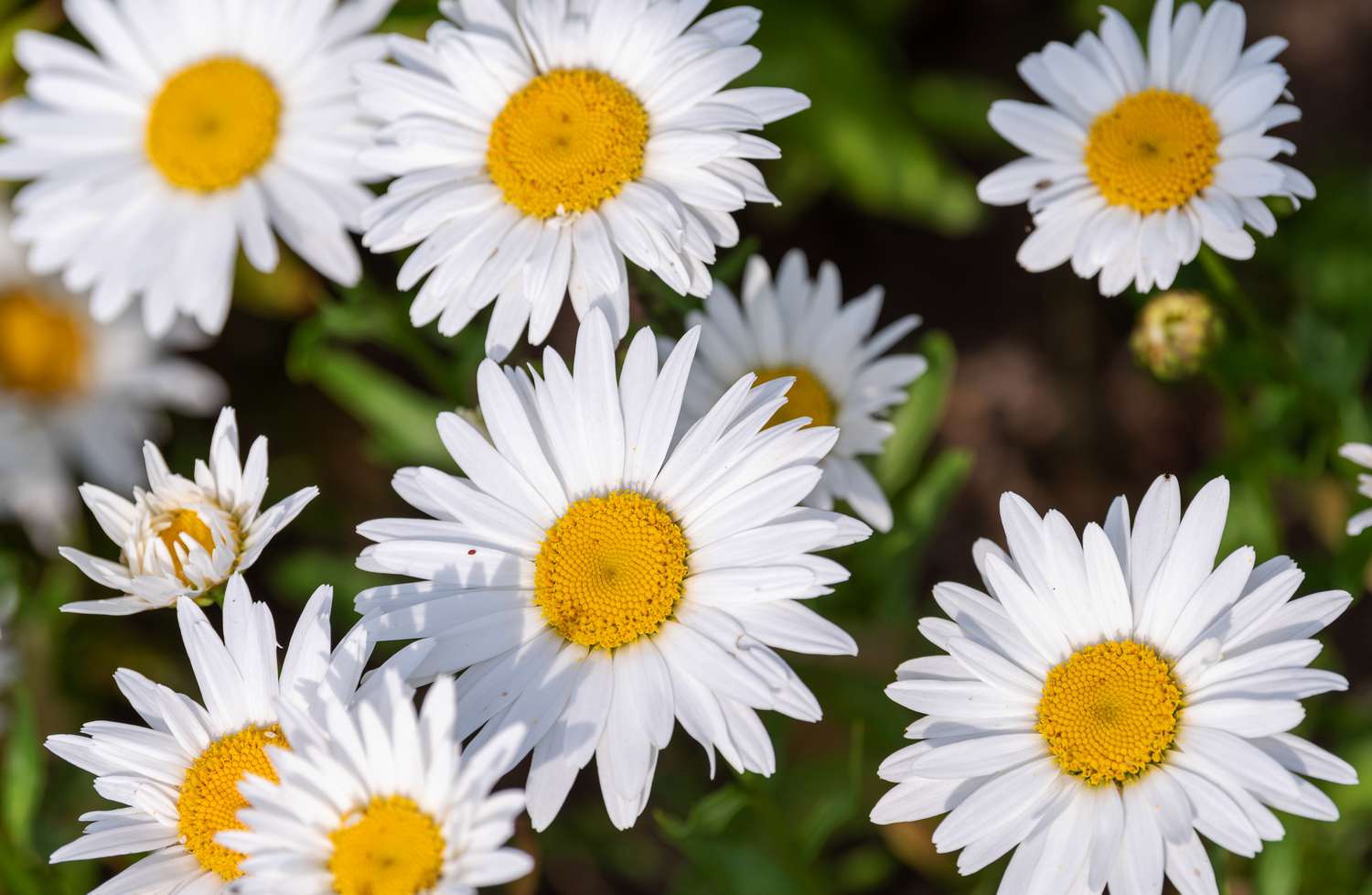
The Shasta Daisy, also known as Leucanthemum x superbum, is a stunning perennial flower that belongs to the Asteraceae family. Known for its cheerful, white petals and yellow centers, the Shasta Daisy is a favorite among gardeners and flower enthusiasts. But did you know that there are many fascinating facts about this beautiful flower? In this article, we will delve into 16 extraordinary facts about Shasta Daisies that will leave you with a newfound appreciation for this beloved plant. From its origin and symbolism to its cultivation and uses, there is so much to discover about the Shasta Daisy. So, let’s dive in and explore the wonders of this remarkable flower.
Key Takeaways:
- Shasta Daisy is a stunning perennial plant that blooms in summer, attracts beneficial insects, and is low-maintenance, making it a perfect choice for flower beds and gardens.
- Named after Mount Shasta, Shasta Daisy has a long blooming period, is drought-tolerant, and can be used in cut arrangements, adding beauty and charm to any garden or floral display.
Shasta Daisy is a perennial flowering plant
One of the most remarkable facts about Shasta Daisy is that it is a perennial plant, meaning it can live for more than two years. This beautiful flowering plant belongs to the Asteraceae family and is known for its stunning white petals and yellow center.
Shasta Daisy is a hybrid
Shasta Daisy is actually a hybrid of three different daisy species: the oxeye daisy, the Portuguese field daisy, and a Japanese daisy. This unique combination gives Shasta Daisy its distinct appearance and characteristics.
Shasta Daisy blooms in summer
One of the extraordinary facts about Shasta Daisy is that it blooms in the summer months. Its captivating white flowers with sunny yellow centers can brighten up any garden or floral arrangement.
Shasta Daisy is a popular choice for flower beds
Due to its stunning appearance and easy maintenance, Shasta Daisy is a favored choice for flower beds and garden borders. The plant’s ability to attract butterflies and bees only adds to its charm.
Shasta Daisy is drought-tolerant
Another remarkable fact about Shasta Daisy is its ability to withstand drought conditions. This makes it a suitable choice for areas with limited water resources or hot summers.
Shasta Daisy can grow in a variety of soil types
Shasta Daisy is known for its adaptability to different soil types. It can thrive in well-drained soil but can also tolerate clay or sandy soil with proper care.
Shasta Daisy requires full sun for optimal growth
For the best growth and flowering, Shasta Daisy requires full sun exposure. It is recommended to plant it in an area that receives at least six hours of direct sunlight each day.
Shasta Daisy attracts beneficial insects
Not only does Shasta Daisy add beauty to your garden, but it also attracts beneficial insects such as ladybugs and lacewings. These insects help control pests and promote a healthy garden ecosystem.
Shasta Daisy flowers can be used in cut arrangements
Shasta Daisy’s long-lasting flowers make it a perfect choice for cut arrangements and bouquets. Its bright white petals create a charming contrast when combined with other colorful flowers.
Shasta Daisy is low-maintenance
One of the key benefits of Shasta Daisy is its low-maintenance nature. It requires minimal pruning and deadheading to prolong its blooming period.
Shasta Daisy can attract pollinators to your garden
The abundant flowers of Shasta Daisy act as a magnet for pollinators such as bees and butterflies. Planting it in your garden can help support the local pollinator population.
Shasta Daisy is deer-resistant
Deer are less likely to munch on Shasta Daisy due to its daisy-like flowers and bitter-tasting foliage. This makes it a great choice for gardens in areas with deer populations.
Shasta Daisy can be divided to propagate
If you want to expand your Shasta Daisy collection or share it with friends, you can easily propagate the plant by dividing the clumps during early spring or early fall.
Shasta Daisy has medicinal uses
Aside from its ornamental value, Shasta Daisy has been used in traditional medicine. It is believed to have antimicrobial properties and has been used topically to treat skin conditions.
Shasta Daisy has a long blooming period
One of the extraordinary features of Shasta Daisy is its extended blooming season. With proper care, it can bloom from late spring through early fall, providing months of colorful flowers.
Shasta Daisy is named after Mount Shasta
Shasta Daisy was named after Mount Shasta, a majestic volcanic peak located in Northern California. The plant’s vibrant white petals are said to resemble the snowy peak of the mountain.
These 16 extraordinary facts about Shasta Daisy highlight its beauty, versatility, and resilience. Whether you’re a gardening enthusiast or simply appreciate the charm of flowers, Shasta Daisy is a captivating addition to any garden or floral arrangement. Its ability to withstand diverse growing conditions and attract beneficial insects further adds to its appeal. So why not bring some Shasta Daisy into your life and experience its extraordinary beauty for yourself?
Conclusion
In conclusion, Shasta Daisy is an extraordinary plant that deserves recognition for its beauty and resilience. Its rich history, diverse varieties, and numerous uses make it a popular choice among gardeners and flower enthusiasts alike. Whether you are looking to add a touch of elegance to your garden or want to brighten up a bouquet, Shasta Daisy is sure to impress with its stunning blooms and long-lasting beauty. So, next time you spot these dainty white flowers, take a moment to appreciate their remarkable qualities and the joy they bring to both nature and people.
FAQs
Q: How tall does Shasta Daisy grow?
A: On average, Shasta Daisy can grow to a height of 2 to 3 feet, depending on the variety and growing conditions.
Q: When is the best time to plant Shasta Daisy?
A: The best time to plant Shasta Daisy is in the spring, after the danger of frost has passed. This allows the plant to establish strong roots before the hot summer months.
Q: Does Shasta Daisy require a lot of maintenance?
A: Shasta Daisy is a low-maintenance plant that requires minimal care. Regular watering, occasional fertilization, and deadheading spent flowers are usually sufficient to keep the plant healthy and blooming.
Q: Can Shasta Daisy tolerate cold temperatures?
A: Yes, Shasta Daisy is a hardy perennial that can tolerate cold temperatures. It can withstand frost and even light snow, making it an excellent choice for gardeners in colder climates.
Q: How do I propagate Shasta Daisy?
A: Shasta Daisy can be propagated through division or by taking stem cuttings. Division should be done in the spring or fall, while stem cuttings are best taken in late spring or early summer.
Q: Are Shasta Daisies deer-resistant?
A: Shasta Daisies are known to be deer-resistant, although this may vary depending on the region and the deer population in your area. Adding deterrents, such as fencing or natural repellents, can further reduce the risk of deer damage.
Was this page helpful?
Our commitment to delivering trustworthy and engaging content is at the heart of what we do. Each fact on our site is contributed by real users like you, bringing a wealth of diverse insights and information. To ensure the highest standards of accuracy and reliability, our dedicated editors meticulously review each submission. This process guarantees that the facts we share are not only fascinating but also credible. Trust in our commitment to quality and authenticity as you explore and learn with us.


